#magic system
Explore tagged Tumblr posts
Text
An additional thing about (@ominous-faechild original; do not steal /lhj) runic magic within my writing!
Styluses are essentially the world's early version of wands. They're made to draw runes, but require surfaces to draw on. They always encase—or utilize as the writing utensil—a conduit (an object containing pure magic, ready for use by anyone). After the invention of wands, styluses are often used as "baby's first wand", so to speak.
In other words: styluses become the giant pencil you give a toddler budding wizard for them to begin to learn runic.
For perhaps predictable reasons, artists are often recruited as wizards. Dyscalculia and dyslexia (although not named in-universe) are known to be a particular struggle for budding wizards, however.
Hugo “Cricket” Tinoco from Waves of Misfortune is an example of both. He was sponsored by the Minoguan government to join a runic academy thanks to being a skilled artist, but was eventually forced to drop out due to struggles “recreating” the runes.
(He's got some combination of the two.)
Wands aren't too dissimilar from the tool in Marvel's Doctor Strange that allows them to write in midair. They often resemble the stereotypical image of a wand, and serve as what's essentially a magic pencil that can write in midair.
However, twist: oftentimes, wizards will etch their most-commonly-used spells spells into the sides of their wands. With that, they can then later filter magic through those runes and quickly, easily, and frequently re-use their preferred spells.
Similarly, many more advanced wizards carry around staves—which are essentially larger wands—with larger conduit cores and many, many, many more runic sigils littered across their casing.
While this may seem to (and does, in fact) simplify the art of spellcrafting, there is a risk to relying on previously-etched runes: the caster has to remember where they've put each, or learn to distinguish between them by feel.
Considering the fact that they're often etched as small as possible both to fit more and to keep a possible enemy from seeing what spells you have at the ready... it is very dangerous, indeed, to rely on pre-etched spells. The practice is highly advised against except for master practitioners with several years of experience... and practice.
"Getting a new wand" is also highly frowned upon in this case, because if the caster fails to put their runes in the exact same spots...
Well.

Some "problems" can emerge.
(unlike last time, i've got this pretty solidified in my mind. i just wanted to share because, again, i thought y'all'd find this cool)
#the faechild orginal#worldbuilding-blocks#blurt-thoughts#on magic#on spellcasting#on wizards#on runic#fantasy worldbuilding#magic worldbuilding#worldbuilding#magic#magic system#magic symbols#fantasy magic#runic magic#writeblr#writers on tumblr#writing#writerscommunity#writers#creative writing#writblr#writing community
62 notes
·
View notes
Text
When I was in my teens, I used to make an entire magic system with 360+ unique spells, ordered in magic schools and categories, and it boggles my mind that I basically reinvented DnD mechanics, even down to metamagic.
I wanted to make a wiki about it but I don't have time for it.

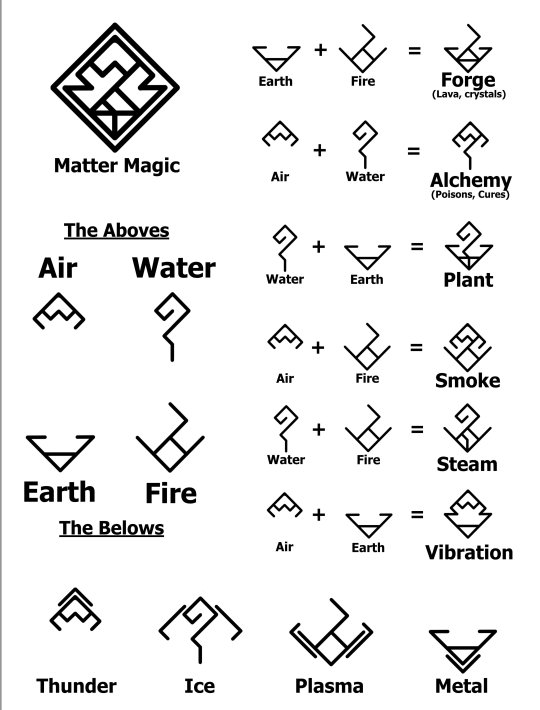
The point was to try to encompass every "superpower" I could think of into a magic system.
I even got lore related to it all, I'm pretty sure I'm gonna simply reuse it all for OC worldbuilding. Ngl the fun part was naming all the spells, symbols and coming up with the logic of it all.
30K notes
·
View notes
Text
Fictional worldbuilding
I have this list I compiled of topics for developing of countries, whether fantasy based or not, and it seems to be a useful resource to share. Feel free to use this list to develop your own lore, but DO NOT claim it as your own or repost. It's pretty long, but I think it covers a lot of relevant topics for worldbuilding.
General
∎ Country name - Etymology if possible - Reasons for the name ∎ Does it take inspiration for a historical time period, aesthetic, or culture ∎ What sort of government is it
Important Places
∎ Main cities - Layout of the city - Economic or historical importance ∎ Other cities and places of importance - Ports - Mine cities - Scholarly cities ∎ Seasonal or turistic places
Climate and Terrain
∎ Important lakes, rivers, mountain chains or other geographically relevant places ∎ Seasons ∎ Climate in general ∎ How does the terrain affect daily habits ∎ Important plants - Agriculture - Crops for export ∎ Important animals - Livestock
Government
∎ System of government - Nobility/aristocracy -- Titles and inheritance/eligibility of titles - Merchant class ∎ Current and past rulers
Social customs
∎ Entertainment - Common forms of entertainment - Games - Cultural/social forms of enterteinment (go to parties/go to the movies/go out to eat/etc) ∎ Seasonal entertainment - Vacations - Seasonal high class customs ∎ Customs regarding reading and books ∎ Customs towards addictive substances - Alcohol - Tobacco - Opioids - Other stuffs ∎ Education and educational system ∎ Houses - Home layouts - Common things in houses ∎ Rites of passage - Age to be presented as adult to the society and customs regarding it ∎ Manners and behaviour in public ∎ Religion - Possible gods - Holidays - Festivals ∎ Customs regarding music - Musical instruments
Notions of family
∎ Inheritance laws ∎ Marriage and concepts of marriage - Marriage rituals - Who is allowed to wed who - Divorce - Customs toward conjugal and domestic violence - Polygamy -- Extraconjugal affairs --- Bastards ∎ Adoption ∎ Division of domestic labor and roles
Economy
∎ Coin and values ∎ Important internal products ∎ Main imports ∎ Main exports ∎ Important commercial relations
Fashion
∎ Common feminine fashion ∎ Common masculine fashion ∎ Concepts about clothing - What is seen as vulgar - What is seen as desirable ∎ Fashion and rites of passage ∎ Hairstyles and adornments
Names and language
∎ Base language ∎ Linguistic influences ∎ Working of names - Family names -- Patronymic and matronymic - Personal names
Magic and technology
∎ Magic - Practice of magic - Permissions within magic - Common and uncommon forms of magic ∎ Magic creatures of importance ∎ Level of technology ∎ Daily uses of technology
#worldbuilding#fantasy worldbuilding#worldbuilding tools#fantasy#high fantasy#magic system#world building#fantasy writing#fantasy world#urban fantasy#creative writing#fanfic writer#writerblr#writers block#writing#writers of tumblr#fantasy country#fanfic#fanfiction#fic ideas#fanfics#resources#for future reference#useful#helpful#for reference#writing tool#writing tools#writing resources#writing research
2K notes
·
View notes
Text

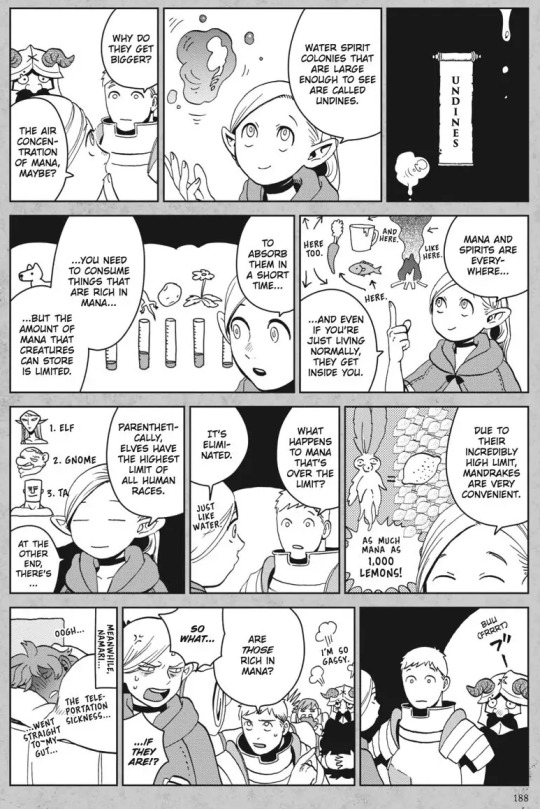
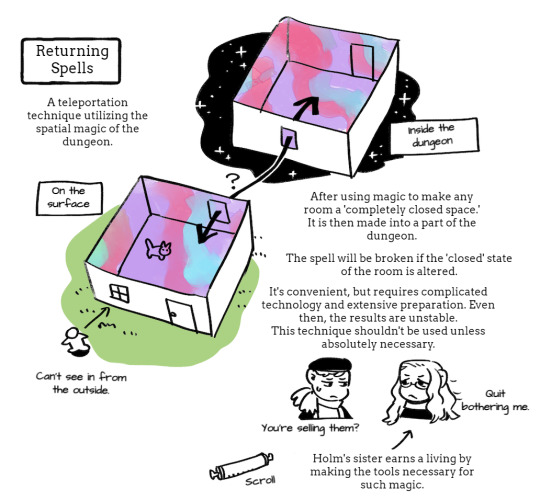
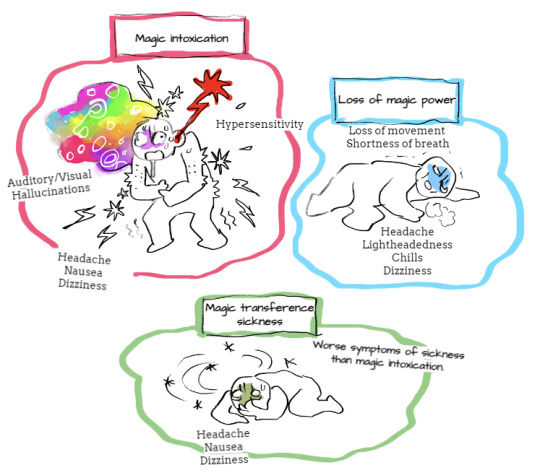
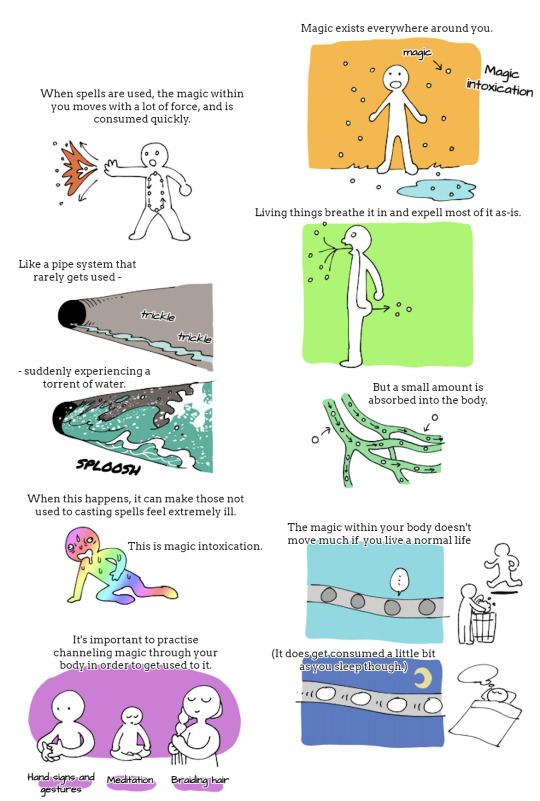
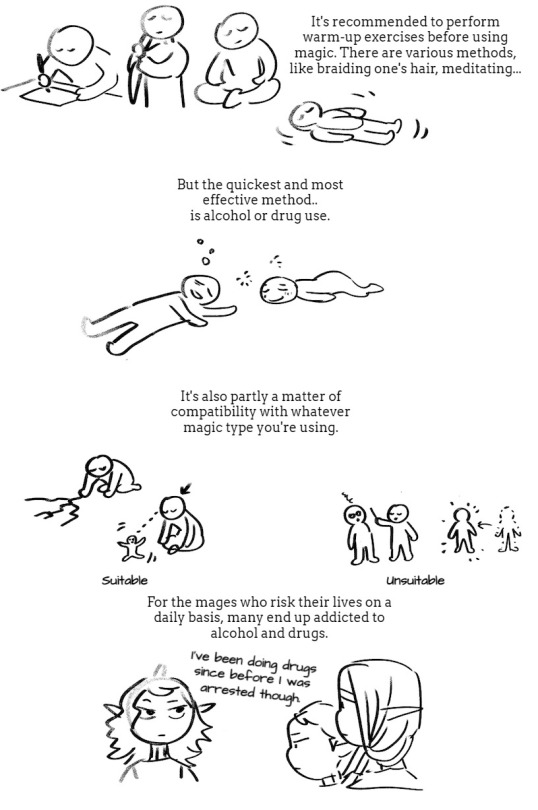
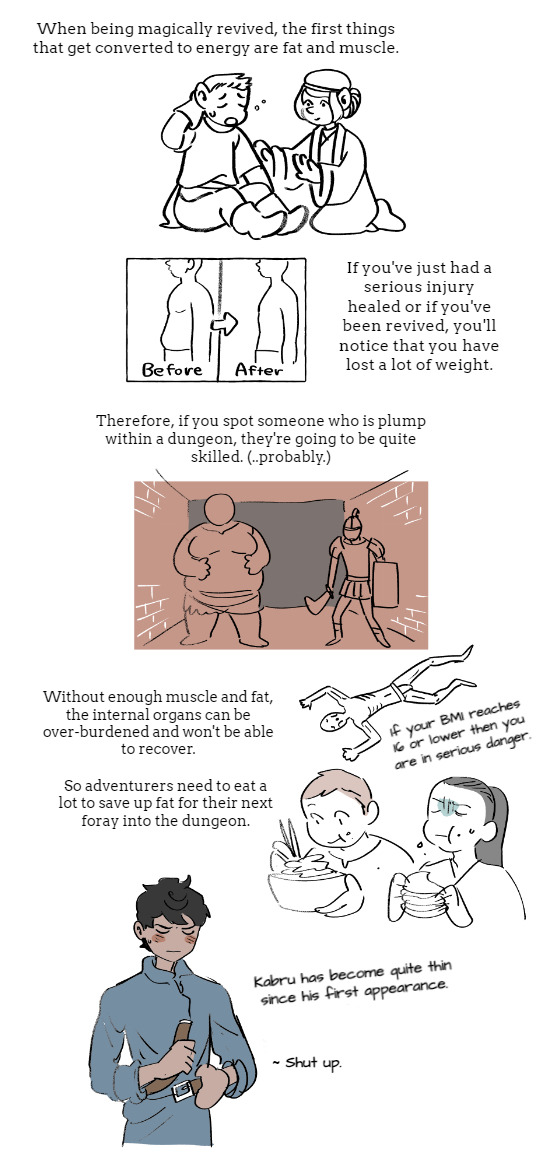
Dungeon Meshi Magic System - Bits about Magic
#dungeon meshi#magic system#for referencing#Compilation#Marcille Donato#Fleki#Kabru of Utaya#Ressurection magic#Mana#returning spell#Theres way more than this but I wanna gather more stuff before making a new post
10K notes
·
View notes
Note
Can you please give me tips on how to develop a magic system? If you've already written the tips, just send me a link to the post. Here's what I have so far:
There are seven forces of magic, namely, Passion, Desire, Joy, Hope, Trust, Clarity, and Love. To use magic, you must channel at least two of the forces. I don't really have anything beyond that.
How can I flesh this out?

Questions For Developing A Magic System
Hello! Thanks for the question. Here are some related posts to your question: Magic System Ideas, Writing Magic Systems, Writing Magicians - the basics
That said, I’ll flesh out some of my ideas based on the information given in your question. Here are some questions you can use to make the magic system specific:
What is the effect of the magic? Generally, magic will either be destructive or constructive or both. Is the purpose of your magic to make a person feel the corresponding emotions?
Does one person have only one type of magic, forcing your characters to work together?
Also consider how you’re going to differentiate the different type of magic – through the use of color, the physical appearances of the different types of magicians, different symbols, different ways of activation, etc.
Do the different type of magic users like or dislike each other in general?
Can this magic be learned, or must one be born into it?
If the magic must be learnt > competitive schooling/training for aspiration magicians, unlocking different “levels” of a type of magic, is it common or rare or people to be able to use
If the magic is born into > discrimination between magical vs. non-magical people, conflict between “superior” and “non-superior” forms of magic, etc.
I think a magic system (apart from being a part of worldbuilding) must provide the basis for interesting conflict. Think about how you can make use of the characteristics of your magic system to pull the plot through a main conflict and back to resolution.
For example,
There are “good” combinations of the seven magical forces and “bad” combinations that would cancel each other out…or worse. Magicians with different types of magic either alley with each other or have long-standing beef based on how “friendly” their magic forces are to one another.
The seven types of magic are tiered. Some magicians monopolize power and inherit it throughout generations – until the hero comes along.
Enemies-to-lovers dynamic where the hero and heroin have to work together because they’d be useless on their own.
You can also consider what your magic system means for us in the real world. All of your magic types are emotions. Is the ultimate moral of the story that we must be willing to embrace conflicting emotions rather than just chasing happiness? Or that every one of these is equally valuable?
Magic systems can be satirical.
Magic systems can be a twisted version of a real-life social/governmental/corporate system, often to critique the real world.
─── ・ 。゚☆: *.☽ .* . ───
💎If you like my blog, buy me a coffee☕ and find me on instagram! Also, join my Tumblr writing community for some more fun.
💎Before you ask, check out my masterpost part 1 and part 2
#writers and poets#writing#writeblr#helping writers#writers on tumblr#poets and writers#creative writers#creative writing#resources for writers#writers community#writers life#writerscommunity#write every day#write it#write anything#writers#magic#fiction#fantasy#magic system
150 notes
·
View notes
Text
Writing Notes: Magic Systems
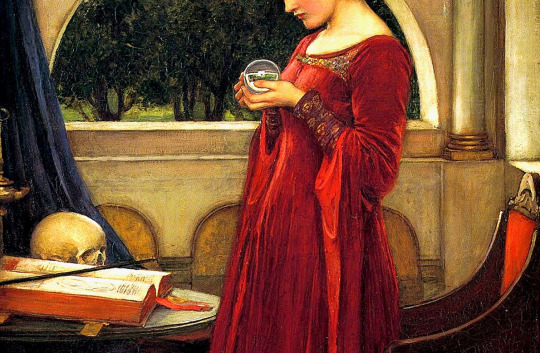
Magic - change wrought through unnatural means
Most fantasy can be placed along a spectrum where there are 3 main points: soft magic at one end, hard magic at the other, and a middle ground between the two.
Soft Magic
Magic that is not well-defined for the reader.
Generally, we don’t understand where the magic comes from, who can use it, or what its limitations are.
Readers can see this type of magic being used.
But they can never anticipate when magic will be used in the plot because they can’t begin to guess how it works.
You can’t break a rule if the rules don’t exist!
Most stories that feature this system will have the magic users be secondary characters, allowing them to avoid explaining exactly how the magic works.
It’s also argued that without knowing everything about the magic, it tends to hold more wonder and excitement for readers.
Hard Magic
Has very rigid boundaries.
Readers know where the magic comes from, how it’s used, who uses it, and what its boundaries and limitations are.
We know the limitations of the characters and can understand why they can’t simply magic themselves out of any particular challenge.
Stories with hard magic systems do not need to avoid the main character being a magic-wielder, as they have the capacity to explain to the reader what is going on.
A lot of writers this system because it gives them very explicit guidelines to follow in their plot and creates some more satisfying pay-offs for readers.
The Middle Ground
The meeting point between the soft and hard systems.
We might understand a bit about the way the magic works, but not all our questions are answered.
While most of the content adheres to rules, these rules aren’t fully explored.
This system relies on the reader’s suspension of disbelief.
The main character can be a magic-wielder or not, and it’s up to the writer to determine when magic will be used in terms of plot.
How to Choose a System
You can and should use these guiding principles to build your magic system. Remember that you don’t have to choose one or the other. Your system can draw from aspects of both. Just stay aware of the weaknesses of the path you choose, and ensure you utilize its strengths.
Use a hard magic system if:
You are going to use magic to solve problems
Your audience is accustomed to the tropes of hard magic
You are okay with jumping through hoops to expand your system
Your magic doesn’t convey a theme
Use a soft magic system if:
You want to convey a theme through magic
You want to create a sense of wonder
You want the ability to expand easily
You want to be accessible to a broader audience
Your magic won’t regularly be used to solve problems
Branches of Magic
Like most writing processes, there isn’t really a correct place to begin designing a magic system. A common, and efficient, place to start, however, is by choosing what type of magic system(s) you wish to employ, such as:
Nature-based magic: water, earth, fire, air, and everything in between
Divination magic: see beyond sight and peer through time and space
Conjuring magic: move objects through space over any distance
Psychic magic: master the world of the mind
Life and death magic: tap into the very forces of life, death, and un-death with this surprisingly versatile collection
Animal- or creature-exclusive magic: some creatures just do it better
Magitech systems: the blurring lines of sorcery and science give magic a next-gen, high-tech flair
Eclectic magic: it doesn’t have to be “real” magic to have a real effect
Uncommon magic systems: the unsung heroes of fantasy magic
AALC Method
How to create your own magic system using the AALC (Appearance, Abilities, Limits & Cost) Method
Appearance
What the magic looks like
Makes the world feel more exotic
Can cause problems for characters but cannot solve them
Usually tied to a character arc
Abilities
What the magic does
Points calculated based on magical effect, range, number of people affected, and duration
Characters have a finite amount of fuel (mana) to use abilities
More powerful abilities require more fuel
The fuel does not have to be overt for the audience to understand
If points not overt, cannot solve conflicts unless a cost system is added
Limits
Unlimited uses of magical abilities
Abilities stratified in codified levels defined by their limits
The more the levels' abilities and limits are known by the audience, the more they can be used to solve conflicts
Focused on clever uses of abilities against stronger foes
Cost system can be added to enhance dramatic moments
Cost
Costs must be greater than or equal to abilities to make them dramatically satisfying
Costs can include time, exhaustion, materials, sanity, morality, etc.
Adds dilemma to magic by forcing characters to make choices
The greater the character's sacrifice, the more audience satisfaction at conflict resolution

Each system builds on the previous ones, so that Cost Systems use all four, while Point Systems only care about Abilities and Appearance.
Multiple systems can exist within the same story, and systems can harden over the course of the story.
The Force, for instance, has been a Soft, Point, Level, and Cost System depending on who wrote it at the time.
SOFT SYSTEMS (Appearance Only)
Window Dressing - magic for secondary characters; can instigate conflict but cannot solve it; e.g., Gandalf
Soft Villain - No explanation or upper limits needed; makes villains more powerful to make heroes greater underdogs; e.g., The Emperor
Chosen One - Unknown power keeps hero safe throughout story; can be considered plot armor unless earned through character arc
Sort Hero Incomplete - Curse or positive ability the character cannot control; hero still learning limits of ability at story's end; powers and arc continued in next adventure
Soft Hero Complete - Hero embraces ability to complete arc and solve main conflict; magic must become harder in subsequent adventures
POINT SYSTEMS (Appearance + Abilities)
Points Opaque - Non-explicit reservoir of energy fuels powers; cannot solve main problems without cost option because characters finding hidden energy reserve feels like deus ex machina
Points Hard - Both abiliites and points system must be explicit like in video games; becomes about resource management; easy to understand but takes sense of wonder out of magic
LEVEL SYSTEMS (Appearance + Abilities + Limits)
Soft Level Static - Unchanging power without upper limits; cannot solve conflicts because feels repetitive; power must be used cleverly; e.g., Wolverine's healing factor
Soft Level Advancing - Increased powers or new powers with unknown limits; cannot solve conflicts unless tied to a character arc like Soft Hero Complete, at which point "unlocks" new abilities
Hard Level Static - Unchanging abilities with clear-cut limits; can solve conflicts so long as setup is properly seeded, usually resulting in sacrifice; e.g., Genie
Hard Level Advancing - Well-established abilities with limits; can solve conflicts based upon clever uses of abilities, usually against stronger foes; e.g., Airbender
COST SYSTEMS (Appearance + Abilities + Limits + Cost)
Static Cost - Well-established cost remains consistent for each use of ability; can solve conflicts since based on personal sacrifice
Cost Fluctuating - Costs change based upon dramatic need; costs must be greater than or equal to ability; possible costs include lost time, money, sanity, health, memory, life, morality, etc.
Sources: 1 2 3 4 5 6 ⚜ Writing Notes ⚜ Writing Resources PDFs Writing Notes: Magic System ⚜ Fictional Items; Poisons ⚜ Fantasy
#writing reference#fantasy#magic system#writeblr#dark academia#spilled ink#fiction#creative writing#novel#writers on tumblr#literature#writing prompt#poets on tumblr#poetry#writing prompts#light academia#lit#writing tips#writing inspiration#writing ideas#john william waterhouse#writing resources
941 notes
·
View notes
Text
Ways to solve the Why Can’t They Use Magic To Fix Everything problem:
•Magic has a cost. The more powerful the spell, the more it drains the caster’s life.
•’We tried that ages ago.The gods grew angry at our arrogance and stripped most of our powers away.’
•Magic is tied to the stars and planets. Its full potential can only manifest on certain astrological events.(And these are once-in-a-millennia type events)
•Only one will a pure heart and selfless intentions can use their full power.
•All magic users are descendants of a (god/spirit). As the years have gone by, the blood has become more diluted, and magic has grown weaker as a result.
•Spell casters can only cast (finite number of spells). They end up using their gift on trivial matters.
•’After the war, we realized the dangers that magic presented. And so we sealed it away, lest it destroy the world.’
•Everyone has magic. Trying to solve one problem is futile as it can be easily undone(often violently and with much destruction)
•inverse of the above: everyone has magic, but their powers are limited and (mostly) harmless.
•Individual, company, or nation has a monopoly on the only substance that can negate magic. As they rule the world, they have installed anti-magic devices everywhere.
•Individual, group, company, or nation has a monopoly on magic. To insure their grip on power, all magic users that do not submit to them are killed.
•An act of good will spawn one of evil. The use of fire will cause somewhere to grow cold and dark. And to save a life, one must sacrifice another.
•The only magic people have access to is Chaos Magic. No one uses it, for obvious reasons.
—••• •• ——• ——• • ••• —•• •• —•—• —•— ••— •••
#writing#creative writing#writing inspiration#writing problems#writing resources#writer#writers#writers and poets#magic#magic system#writer on tumblr#writeblr
6K notes
·
View notes
Text
Mastering the Art of Necromancy in Your Fantasy Novel

Hello fellow writers and conjurers of fantastical worlds,
In the tapestry of fantasy literature, few elements hold the allure and enigmatic charm of necromancy. The art of communing with the spirits of the departed, wielding the powers of death and undeath, and delving into the mysteries of the afterlife conjures a rich and eerie tapestry that captivates readers and writers alike. In this comprehensive guide, I shall help you embark on an odyssey into the realm of necromancy, unraveling its nuances, and harnessing its potent essence to enrich the worlds and characters within your fantasy novel.
Embracing the Essence of Necromancy
Necromancy is a mystical strand woven into the very fabric of fantasy literature, offering writers a gateway to explore themes of mortality, forbidden knowledge, and the uncharted territories beyond death. The art of necromancy beckons us to navigate the delicate balance between life and death, weaving a narrative tapestry that shimmers with eerie allure and spine-tingling intrigue.
Understanding the Arcane Threads of Necromancy
1. Unraveling the Nature of Necromantic Magic:
Necromancy encompasses a vast array of mystical practices, ranging from communing with spirits and animating the dead to harnessing the energies of the afterlife. Understanding the scope of necromantic magic is crucial when integrating it into your fantasy world.
2. Delving into Ethical Quandaries:
The art of necromancy often delves into moral ambiguity and ethical quandaries. As a writer, explore the complex interplay between wielding power over life and death, and the consequences it imposes on both wielder and world.
3. Crafting Necromantic Characters:
Characters draped in the shroud of necromancy carry an undeniably enigmatic allure. Whether they are enigmatic necromancers, vengeful revenants, or tormented spirits, imbue them with layers of depth, conflict, and the allure of forbidden knowledge.
4. Cultivating the Atmosphere of the Necromantic World:
Infuse your narrative with an eerie and otherworldly ambiance that resonates with the essence of necromancy. From desolate graveyards to spectral realms, let the setting itself exude an aura of haunting allure and metaphysical mystery.
5. Unraveling the Consequences:
The tendrils of necromantic magic often carry unforeseen consequences. Delve into the ripple effects of wielding such potent powers, shaping the fate of both the user and the world they inhabit.
Enchanting Your Narrative with Necromantic Flourishes
1. Rich Lore and Mythos:
Weave an intricate tapestry of lore and mythos surrounding necromancy, invoking ancient rituals, mysterious tomes, and the whispers of spirits to deepen the mystique of this arcane art.
2. Enigmatic Rituals and Spells:
Craft spells and rituals that exude an otherworldly aura, invoking the presence of specters and the echoes of forgotten souls to imbue your narrative with the esoteric essence of necromantic magic.
3. Ethereal Companions and Servants:
Bring forth spectral allies, reanimated guardians, and enigmatic spectral entities that serve as both catalysts and enigmas within the narrative.
4. Narrative Pivots and Twists:
Infuse your story with unforeseen twists and narrative pivots that stem from the tendrils of necromantic magic, shaping the destiny of characters and worlds with its potent influence.
Mastering the Art of Responsible Representation
1. Portraying the Nuances of Necromancy:
Embrace the multifaceted nature of necromancy, delving into its allure and peril, and steering clear of reductionistic portrayals that fail to capture the complexity of this enigmatic art.
2. Navigating Sensitive Themes:
Acknowledge the sensitive themes surrounding necromancy, portraying its enigmatic allure while respecting the boundaries of respectful representation and narrative integrity.
Navigating Ethical Quandaries and Moral Ambiguity
1. Delving into the Temptation and Consequences:
Illuminating the temptations and consequences inherent in wielding necromantic powers, delving into the moral turbulence and ethical crossroads that define the narrative and its characters.
2. Shaping Characters' Moral Journeys:
Embrace the moral odysseys of characters enmeshed in the tendrils of necromancy, illuminating their struggles, choices, and the transformative impact of their interactions with the enigmatic art.
Embracing the Mystique of Necromancy
The enigmatic tapestry of necromancy holds the potent key to unraveling the mysteries of death, whispered secrets of the afterlife, and the spellbinding allure of enigmatic power. Embrace its allure, wield its essence responsibly, and watch as your narrative flourishes with a haunting, spine-tingling allure that captivates readers far and wide.

Warm regards and unwavering encouragement on your enigmatic odyssey, Ren T.
#creative writing#writing#writing tips#writers block#writeblr#thewriteadviceforwriters#on writing#how to write#writers and poets#witchcore#necromancer#necromancy#magic#high fantasy#worldbuilding#magic system
514 notes
·
View notes
Text
Questions to ask yourself when creating a magic system
I have more questions for you!!! :D
As there are no real-word examples for this one, I’m going to be talking a lot about my own magic systems, and those of the medias I enjoy! There will be a list of all the things I referenced at the bottom!
What does magic DO
Exactly the title. What does magic do? (Can it make potions? Cast spells? Animate things? Transfigure things? Create things? Kill things? Cast hexes or charms? Multiple of these?)
What does magic have an affect on? What does it not?
How strong is magic? What are its limits? How do these differ from person to person, or place to place?
Does magic do different things for different people?
How does a magic caster’s intention for a ‘spell’ affect it? Is magic entirely reliant on a mental image of what is wanted, or does it need to be casted a certain way to work, like a recipe?
How is magic casted? (Note- I recommend being creative here! It doesn’t have to just be waving a wand. It can be through making pottery, it can be through sewing certain patterns, or dancing a certain dance, etc etc etc)
How can spells be used for something that is not their intended/common purpose? How are new uses of magic discovered? Which uses are most common, and why?
How does societal standards affect the use of magic? Will less people know about more harmful or taboo spells? Will it be less common for, say, a woman to use/be trained in magic?
Source of Magic
Where does magic come from? (Do the gods give access to their most devout followers? Is it handed down in one’s blood? Does it come from the earth?)
Is magic learnt, or are people born with it? (E.g does magic work through potions that can be made by anyone with the right ingredients, or is it only possible if one has magic already in their blood?)
Can someone who logically shouldn’t know magic learn/possess it by alternate means? (E.g. Luz from The Owl House learning magic via ‘glyphs’ despite not being a witch) how would people treat this? (Is it seen as ‘lesser’ or somehow not ‘real’ magic?)
Can magic be harnessed through a wand/staff/etc? Can it only function through this conduit, or can it be done without? How does magic function if it does not have the aforementioned conduit? (Is it harder to manage? Is it more dangerous? Is it simply lesser?)
Another dot-point because the last one was far too long; how is the use of ‘magical aides’ (wands, etc) treated? (Is it seen as something only a child would use? Is it very common? Is not using one seen as dangerous and bad?) How does the function of magical aides affect this? (Note- a very good example of this is the string in A Marvellous Light, which functions via ensuring a magicians cradles [hand movements one does to cast a spell] are more precise. It is only used by those with little magic, so it is looked down upon.)
How would one learn magic? (Is magic taught in schools? Are there books on it?)
Can magic be done/enhanced if multiple people cast it together? How would this be done?
Is magic a separate entity from it’s user? Is it an entity at all? Can it react without instruction/ disobey it’s user? Is it a possession of it’s user? Is this different/ perceived differently for different people?
Can magic be mistreated/ abused? (Note- here I do not mean an ‘abuse of power’ I mean abuse in the way one could abuse a pet) what are the consequences of this? (Might magic stop working, or turn on it’s user?)
Affect on Culture/the greater world
Who has magic? Who does not? Who knows about magic? Who does not? Is it a secret? How is this secret kept? Who enforces that it must be a secret? What is the punishment for letting the secret be known?
Can people have more or less magic? Can people have more or less knowledge on it, or skill with it? Does this cause any power imbalances or issues for either side?
How do the uses of magic impact the way things are done? (E.g. if there is a spell used to dry things, people may not use drying racks.) would the skills of those with more magic be useful in a work setting? (E.g. if some people know the aforementioned drying spell and some do not, might those who do know it work as something close to a washerwoman because of their skill?)
Is magic regulated at all? Who regulates it, what are the regulations, how strict are they, and what are the punishments for breaking them?
Is magic seen as normal? (Keep in mind: if magic is possessed by a majority of people, it very well may be. Because of this, characters may be less likely to be impressed by magic. Think about how this will affect the language surrounding magic, and how people treat it.)
How will different people view or interact with magic? (E.g. a rebellious teen, a businessman and an elderly woman are not going to have the exact same view or uses of magic. Try to explore this!)
How will those with a great deal of magic view those without/ without a great amount, and vice versa? How does this affect the world and it’s prejudices?
Consequences
How can magic hurt a person if misused/overused/ used at all? (Is the damage physical, mental, physiological, all three?) (E.g. my own magic system causes people to actively unmake themselves as they use their magic, leading to sickness, insanity, derealisation, hallucinations, etc etc etc)
Is this damage known? How does the knowledge of it affect the treatment of magic? (Are people terrified of it? Do they not care, and see it as a worthy risk? What might lead someone to push through the damage?)
How does this damage manifest, and how noticeable is it? (E.g. Are there physical scars or other warning signs, or is it entirely unnoticeable until it is too late, like magical rabies?)
Can damage from magic be reversed or healed? How? Can potential damage be avoided? How?
Can one’s magic turn on oneself? How would this happen, and what are the consequences of this?
Can magic be hurt/diminished? How does this affect its users? (E.g. silver and werewolves)
When an attempt at magic fails, how does it fail? Is it like baking, where at worst it’ll ‘taste good, but be a little dry’ or is it like mixing volatile chemicals, where at worst you die?
Appearance
How does magic look? (I highly recommend finding a metaphor or motif for magic, as this really helps flesh out its appearance and makes it easier to describe!!)
Can its appearance look different for different people? Can it change over time?
Does magic manifest itself via means other than visual? (One of my characters has very strong nature magic, and thus he grows flowers when he is happy, and always smells floral)
Does magic have a physical effect on it’s users? (E.g. the dark magic in The Dragon Prince)
Is one able to tell when magic has been cast upon something?
Every piece of media I referenced in this, in order of appearance
The Owl House, a TV show on Disney written by Dana Terrace
A Marvellous Light, a novel written by Freya Marske (this series is a wonderful example of how to make a magic system. It is very well thought out, and the varied experiences and views of magic for each magician character is so, so good. 10/10. If you want a good example of magic please read this!!! (Granted I might be a little biased because I just love this book series))
The dragon prince, a TV show on Netflix
223 notes
·
View notes
Text
I'm bored of elemental giants. Use environmental giants instead.
Environmental Giants all start out the same, but their bodies take up the features of the place they live in. They become a reflection of their domain.
Giant takes up residence in the cliffs of dover? Not a stone giant. No, that's specifically The Giant of Dover. Its body is made of chalk. It can create dust clouds of chalk with its breath, its shoulders are padded with tufts of short grasses and blackberry bushes.
Giant takes up residence in the ruins of a highway during an apocalypse? That's the I-95 Giant. It has rebar spines along its back, skin of pavement and concrete, and wears wrecked cars as armor.
And to make this idea more dynamic, the giant's form changes as the ecosystem changes. A river gets diverted away from a Giant's domain? Then the Giant dries up along with its land. Now the Giant has an incentive to protect its dominion, and a weakness that its enemies can exploit.
#game design#indie rpg#ttrpg#indie games#rpg#rpgs#indie ttrpg#dnd#tabletop rpgs#worldbuilding#writing#magic system
2K notes
·
View notes
Text
Some Basic Occult Terms You Should Know
If you're a newbie occultist, you might feel a bit thrown off by all of the arcane terminology and magibabble that your books will start throwing at you. Here's a list of all the most important and/or most misued terms, and what they're supposed to mean. (If you're a fantasy writer and you want some authentic occult terms to use for your magic system, this might be useful for you, too!) I have a list of occult fields and divination methods here, so I'll leave them off this list.
Altar: Your working space for ritual. It's called an altar because magic is (usually) an inherently spiritual endeavor — you are communing with grand cosmic forces, of one kind or another. A basic altar consists of your magical tools, candles (for vibes), and images or statues of whatever spirits you're working with. (Spelled altar with an "a," not alter with an "e." An alter is a headmate or a personality in a DID system.)
Athame: A ritual knife, specifically one used in Wicca. It's mostly used for directing energy, rather than for cutting things. (Sometimes, a knife or sickle that is used for cutting things is called a boline.)
Apotropaic: Referring to protection magic. An apotropaic charm is a spell meant to keep bad stuff away. Amulets are apotropaic talismans.
Astral: The spirit world. The astral plane is the literal or figurative "above" in "As above, so below." "Astral" can refer to ethereal or spiritual beings or "energy." Sometimes magic is called "Astral Light," like the Force in Star Wars. Astral projection is traveling through the astral plane during meditation, by sending one's spirit or astral body away from one's physical body.
Besom: A witch's broom, specifically a traditional broom made of twigs tied around a pole. It's just an old term for a broom. (Witchcraft likes to make use of Old and Middle English words.)
Baneful: Describes any kind of spell designed to harm or inhibit another person. Also called malefic (as opposed to benefic) magic.
Banishing: A spell that is designed to force unwanted vibes out of a space. Usually performed at the beginning and end of a ritual, so you can begin with a "blank slate." It's like hitting the magical reset button. Also good for managing negative emotions. The best-known banishing in Western occultism is the Lesser Banishing Ritual of the Pentagram. A banishing can also be a type of baneful working that forces a person's influence out of your life.
Binding: A spell that is designed to prevent a person or entity from acting. A binding spell can prevent a person from harming themself or others, or prevent a spirit from misbehaving.
Charm: A generic term for a spell, especially one represented by a physical object or phrase. A lot of charms are inscriptions or symbols written on paper and kept on one's person.
Conjuring: A spell or ritual that summons a spirit. Invocation and evocation are both types of conjuration.
Correspondences: Magical properties of things existing in nature, e.g. colors, crystals, plants, animals, elements, planets. They were once called occult virtues, and were a staple of Renaissance magic. They're like the building blocks of a spell or ritual, and they can be used as tools to align natural forces with the magician's intent.
Curse: A baneful enchantment, a spell designed to cause harm to another person. There's lots of different types of curses, and lots of reasons to cast one. Sometimes the word hex is used interchangeably.
Demonolatry: The practice of worshipping demons, as opposed to demonology, which is the study of demons or any magical working involving demons. Some magicians prefer to bind and command demons rather than worshipping them, but demonolators treat demons the way pagan witches typically treat gods.
Divination: Acquiring information by magical means. There's thousands of different methods. Some of the more popular ones are cartomancy, reading cards, cleromancy, casting objects like stones or dice, and scrying, staring into a blank object like a mirror or a crystal ball. Astrology is a kind of divination, too.
Ego Death: A particular type of mystical experience, in which one becomes "submerged" in the infinitely vast presence of God or the Universe, and briefly loses one's sense of self. It can be traumatic the first time one experiences it, which is why it's compared to or symbolized by death. Subsequent times are usually much more peaceful and enlightening. A prerequisite for most mystical traditions.
Egregore: An entity created and sustained by a group of people, a collective thoughtform.
Elements: Much of Western esotericism is based around the four classical elements, Earth (🜃), Air (🜁), Fire (🜂), and Water (🜄). They're better understood as the four states of matter: solids (🜃), liquids (🜄), gasses (🜁), and plasma (🜂). Each one is understood as a spiritual force, with its own correspondences and areas of life that it governs. Much of Western magic involves harnessing their influence.
Enchanting: Imbuing an object or place with magic. The magic of the enchantment will last much longer than the duration of the ritual.
Evocation: Calling a spirit to appear before you within a ritual space, a more correct word for summoning. Ideally, a successful evocation will cause the spirit to manifest before you in some way (though you might need a scrying mirror in order to see it).
Familiar: A personal spirit that aids a witch or other magic practitioner. Distinct from a servitor in that it is an external entity that helps the witch of its own accord, not one that the witch themself has created. Traditionally shaped like an animal, but not always. (Lately, the term has become popular as a word for a witch's pet or animal companion. Lots of people use the word "familiar" to refer to pets that aid with magical workings. Traditionally, though, familiars are spirits, not actual animals.)
Fetch: A witch's astral body (or servitor) sent forth to do their bidding.
Glamour: A type of enchantment or illusion spell that changes the appearance of something. In real life, glamour spells won't literally change the physical appearance of a thing, but they will change people's reactions to a thing, e.g. casting a glamour on yourself can cause other people to perceive you as being more attractive.
Grimoire: A book of magic (as opposed to a book about magic). There are lots of mysterious magic books that circulated in Europe in the Middle Ages and early modern period. These books are full of spells, rituals, and weird symbols meant to conjure spirits, gain secret knowledge, and control other people. Modern grimoires are books of practical spells and rituals for experienced practitioners, as opposed to theory or how-to guides. Most occultists also keep a personal grimoire to record their own spells and rituals and their results. (In Wicca, a personal grimoire is called a "Book of Shadows.")
Incantation: Magic words, especially spoken (as opposed to written) spells.
Invocation: Calling a spirit to give you some of its power, either by lending its attention or influence to your magical working, or by physically possessing your body and mind. The latter type of invocation can be partial, meaning you share your body/mind with the spirit, or total, in which the spirit possesses you completely. Don't attempt total invocation alone! Total invocation needs a group ritual, so that other people can tell you what you do and say while possessed, and keep you safe. (Besides, partial invocation is intense enough as it is.)
Left-Hand Path: In Western occultism, the Left-Hand Path is an umbrella term for traditions that take an iconoclastic or self-interested approach to magic. LHPers tend to resent dogma, question taboos, and place emphasis on one's personal power or divinity over unification with the Divine or service to others.
Magic: It's impossible to properly define "magic," with all of its nuances, in a list like this. So I'll give the short version: One famous definition is Aleister Crowley's, "causing change in accordance with Will." This is a pretty broad definition that includes anything done with intention. A more academic definition of magic is "heterodox ritual behavior." Personally, I prefer "harnessing spiritual or supernatural forces to cause desired change in one's life."
Mysticism: The practice of facilitating direct interaction with the Divine, i.e. meeting God face-to-face, in order to acquire spiritual knowledge. Mysticism is taxing and comes with a real risk of insanity, so, it requires a lot of diligent study and mental discipline for most people.
Necromancy: Originally, necromancy referred to a type of divination, which involved calling the spirit of a dead person to ask it questions. (The "Speak With Dead" spell in D&D is a great example of traditional necromancy.) Lately, though, "necromancy" has come to refer to any kind of magic involving the dead. (Be respectful! Dead people are still people.)
Patron Deity: A god or goddess that takes a personal interest in you and your spiritual development. You can't force a god to take interest in you, so you may or may not have a patron deity. If you don't have one, don't worry, you can still do magical work with gods! See this post for the rundown. (Btw, the feminine of "patron" is patroness, not "matron." "Matron" means something different.)
Pentacle: A type of circular talisman inscribed with a sigil representing a spirit or planet, used to evoke its influence. Typically worn as a pendant. Also refers to a pentagram (five-pointed star) in a circle.
Poppet: A doll made of clay or cloth used to represent a person in a spell. In pop culture, poppets ("voodoo dolls") are best known as cursing tools, by being pricked with pins or otherwise harmed in order to harm the person. But there are lots of potential uses for poppets beyond that! For example, they can also be used as healing tools by being stuffed with herbs, or taken care of like a sick person. A type of sympathetic magic.
Projection: Pushing one's own magical power or intention out of one's body, using one's wand or dominant hand. Astral projection is pushing one's spirit out of one's body. A projection is also a type of illusion that creates the appearance of something that isn't there (as opposed to a glamour, which disguises something that is there).
Right-Hand Path: In Western occultism, the Right-Hand Path is an umbrella term for traditions that adopt a formalized structure, and/or place emphasis on mystical union with God and achieving enlightenment. The RHP tends to be more community-focused, as opposed to the LHP's radical individualism. RHPers also care about order, and working according to established traditions.
Servitor: An entity created by the magician. Usually, servitors are "programmed" to perform specific tasks, like magical robots. A servitor created by a group of people is an egregore. A servitor with its own personality and agency is sometimes called a tulpa, but this word is appropriated from Tibetan Buddhism, so I tend not to use it. (My personal spirit insists that he is not a tulpa. Also "tulpamancy" drives me up the wall — "-mancy" means divination, people!)
Sigil: An abstract symbol or glyph meant to represent the desire or intention of the magician. Can also be a generic term for magic symbols or seals in grimoires. Sigils have ancient roots, but the practice of turning one's desire or intention into an unreadable symbol is a modern one. Sigil magic streamlines the process of casting a spell, making it simple, but more difficult, because you have fewer tools and gimmicks to do the heavy lifting for you. (Technically, a sigil does not have to be a symbol — it can be a mantra or incantation, a song, a series of dance steps, etc. as long as it abstractly represents the desire.)
Sympathetic Magic: Magic that affects a target by acting upon a symbol of the target, like using a poppet to represent a person, or using a rose to represent the influence of the planet Venus. Anything you do to the symbol, you do to the target. The magical connection between the symbol and the target is called a "sympathetic link." Correspondences are often used as material representations of immaterial things, like luck or love or protection. By acting upon the material object, you affect the immaterial thing.
Talisman: A spell in the form of an object. There's lots of different kinds of talismans: magic words or sigils written on paper, enchanted jewelry, pentacles, natural objects with their own magical properties (like crystals or feathers), packets of herbs and other ingredients, etc. An amulet is an apotropaic talisman. A talisman has to be the spell itself, so, magical tools are (mostly) not talismans.
Theurgy: Deity work. Magic or mysticism involving the invocation of deities, or the practice of casting spells with the aid of a god or goddess. Mystical theurgy attempts to acquire knowledge of the universe by contemplating the Divine, eventually reaching unification with it.
Thoughtform: A thought or idea that is projected out into the universe so that it will manifest physically. The more coherent the thoughtform, and the more willpower behind it, the easier it will be for it to manifest. Thoughtforms are based on the idea that thoughts alone have some degree of existence, even agency. Everything man-made began as an idea in someone's head...
Trance: An altered state of consciousness. Most kinds of magic require one to be able to enter a trance state at will. There are lots of methods of entering a trance state, in broadly two categories: inhibitory trance, which creates an altered state of consciousness by physically restricting the body or mind, and excitatory trance, which creates an altered state of consciousness by overstimulating it.
Unverified Personal Gnosis: The divine messages or insights that a mystic receives during ritual or trance. They're unverified because they don't really hold water for anyone but the mystic themself. (It is not a good idea to go around insisting that your revelations are the infallible word of God and everyone should listen to you.) Shared Personal Gnosis is when multiple mystics have similar experiences or revelations. Verified Personal Gnosis is when your experiences or revelations are attested in historical sources.
Ward: A type of apotropaic spell that protects an area, like a kind of spiritual shield.
#occult#occultism#ceremonial magic#folk magic#chaos magic#magick#witchcraft#witchblr#paganblr#witchcraft 101#occult 101#occult basics#terminology#dictionary#magic system#fantasy worldbuilding
35 notes
·
View notes
Text

Ancient Valyrian Marriage Rites
The Ceremony:
Held under moonlight.
• Oath of Blood and Flame:
The couple would cut their palms with a dragonbone dagger, joining hands over a flame basin. Their mingled blood was dropped into the fire.
If the flame burned violet or gold the union was said to be touched by the gods of fire.
• Veil of Ash:
A translucent black veil, dusted with sacred volcanic ash, was laid over both heads. Under the veil, a flame-seer would chant in Aelqxyr, the prophetic dialect of High Valyrian.
• Soul-Marking (for nobility):
A ceremonial glyph would be branded onto the couple not for ownership, but for unity. It glowed faintly in proximity, pulsed during arguments, and dimmed with grief.
• The Dragon’s Cry:
If dragons roared during the rite, it was seen as an omen of passion. If they circled overhead, the marriage was said to be destined for greatness or tragedy.
Types of Marriages in Valyria
• Bloodline Bonds:
Sibling and cousin marriages were not taboo. They were sacred. Dragonlord blood had to remain pure, and only blood of the flame could birth more dragonriders.
• Flamepairing:
Political unions based on prophetic alignment. Sometimes determined by dreams. It was considered an honor to have your match foretold by fire.
• Moonbonds (secret or forbidden):
Unions performed without flame witnessing, usually across class or outside noble bloodlines. These were powerfulbut cursed. It was said that flame would not protect such a love.
#valyrian scrolls#valyrian culture#old valyria#valyriansource#doom of valyria#asoiaf#asoiaf fanart#dragon art#worldbuilding#magic system#fantasy#grr martin
23 notes
·
View notes
Text
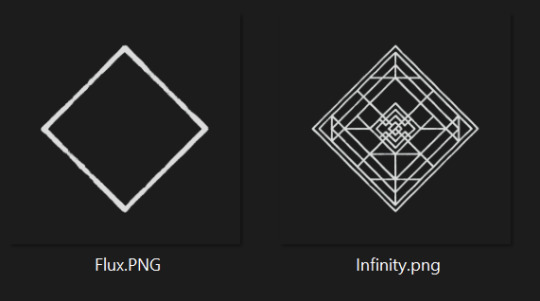






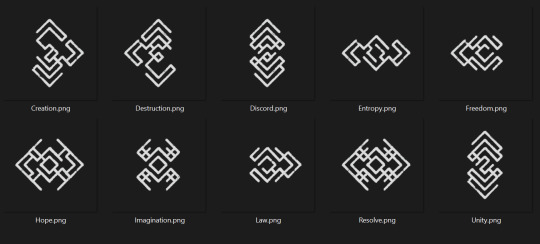
I'm cooking and I'm eating at the same time.
1K notes
·
View notes
Text
First Draft on Major Magic Types and Magic Sub-classes
Within the world of Seasonal Decay there are five Major Magic Types, every character within the world has one or more type depending on race.
These classes and their sub-classifications are as follows:

Divine Magic with its sub-classes being in order Contract, Detection, Divination, Healing and Warding.

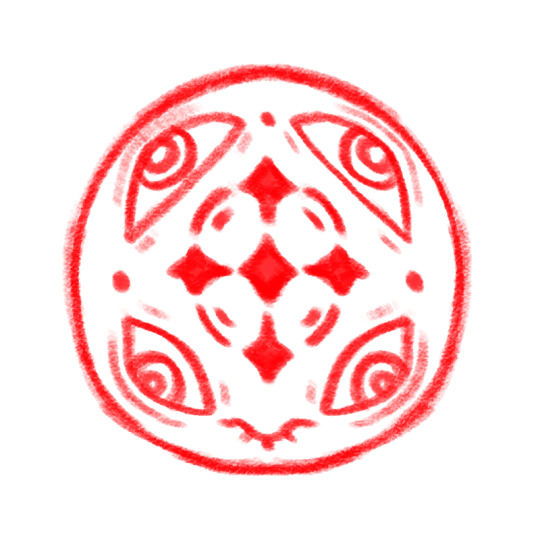



People who have Divine Magic can harness one of the sub-classes. Whether it is predicting and/or manipulating future outcomes, restoring vitality or guarding people and objects from corruption, Divine Magic is the most highly respected Magic type in the world of Seasonal Decay. However, it is in only 12% of bloodlines.
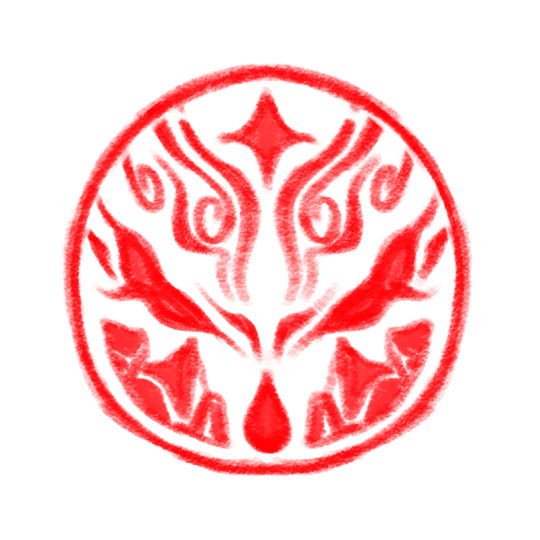
Elemental Magic with its sub-classes in order are Alchemy, Destruction, Elements, Luck and Survival.

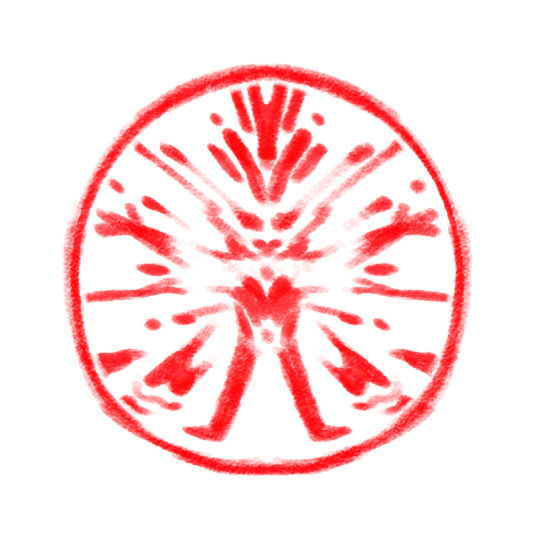
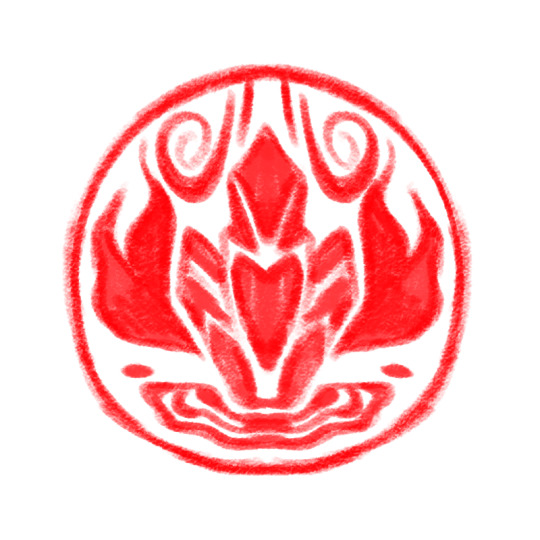


Elemental Magic encompasses magic pertaining to the aspects of the natural world. Such as the basics like Fire, Earth, Water and Air, to far more complex aspects such as manipulation of chance, fortune and survivability. This magic type is the most common with a 54% chance.
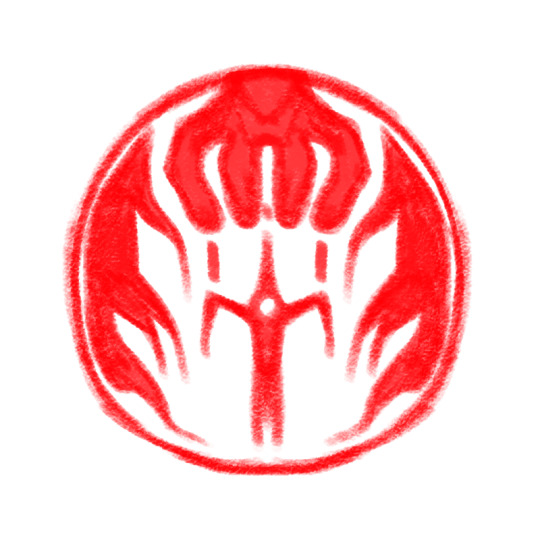
Infernal Magic and its sub-classes in order are Banishment, Concealment, Curse and Necro.
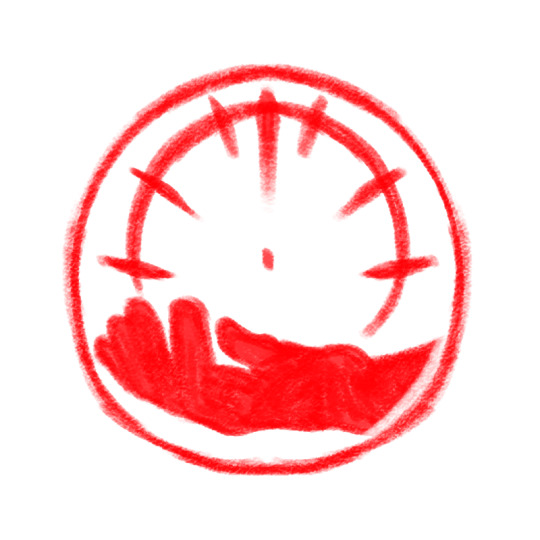

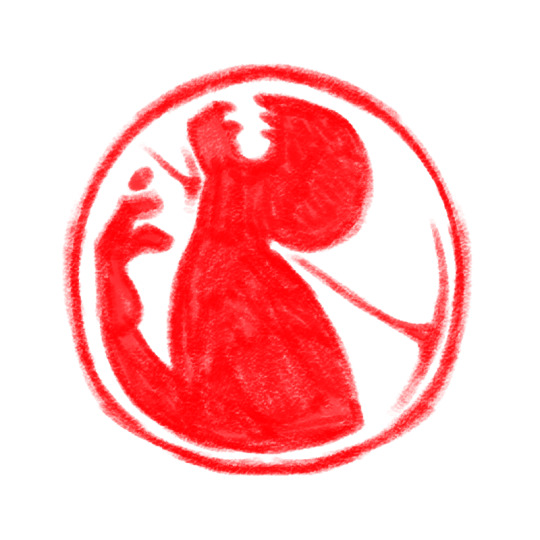

This is the rarest Magic Type with only an 8% chance of showing up in a bloodline. That and its less then pleasant nature give users of Infernal Magic a bad reputation. Not much is known about all uses of this magic, or if they are well known they are not shared outside of those who hold this Magic Type.
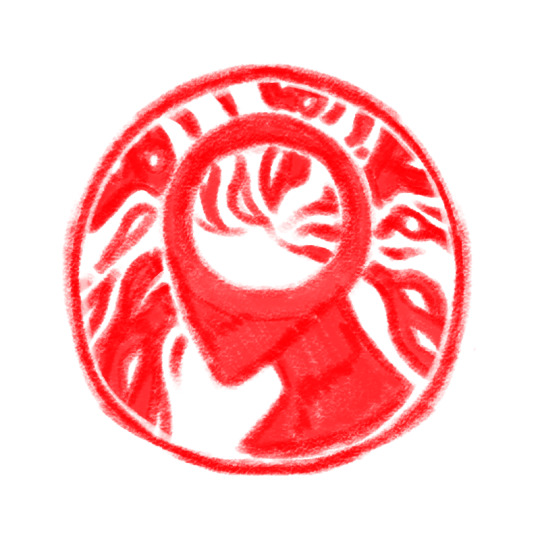
Mental Magic and its sub-classes in order are Communication, Control, Dream, and Illusion.


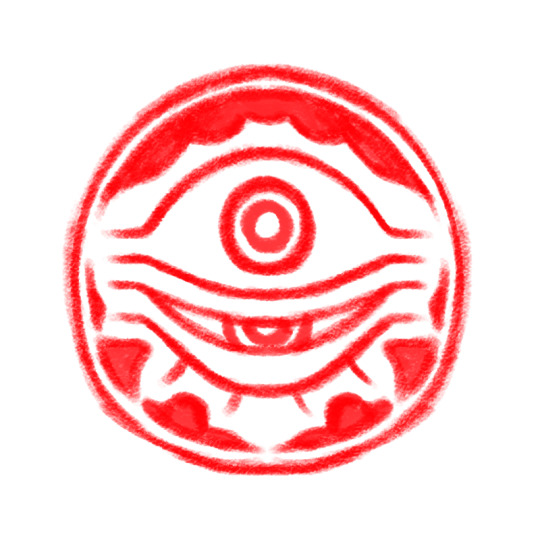
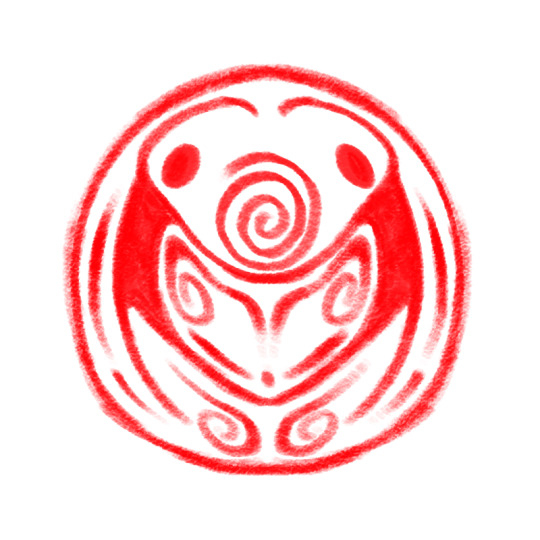
People with Mental Magic range from being able to relay messages through vast distances, walk through the minds of others in sleep, create imagery that isn't there and control the thoughts of others. Though some have suggested that Control Magic could branch off into it's own sub-sections, but further research is needed. This type only has a 10% chance of appearing.
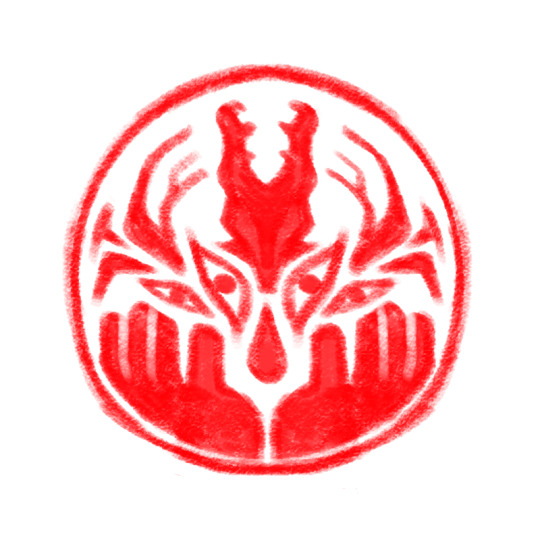
Lastly is Physical Magic and it's sub-classes which are Altercation, Defense, Enhancement, Sensory and Transformation.

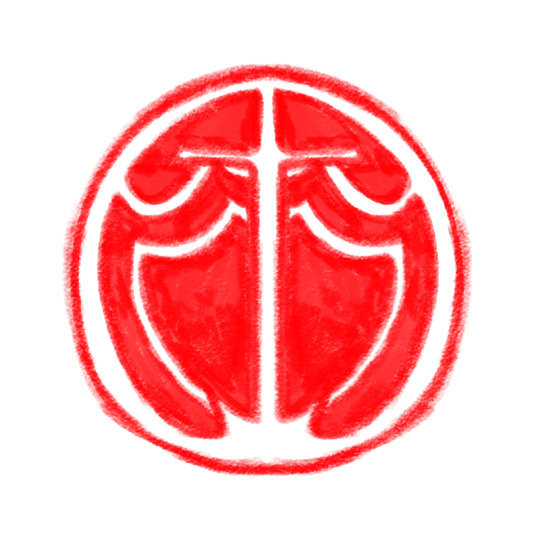
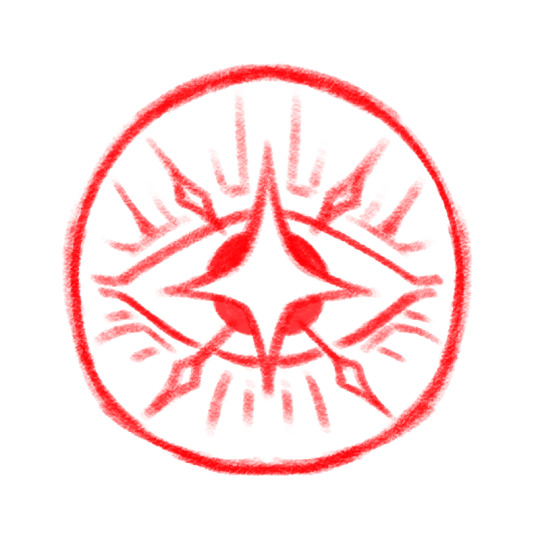
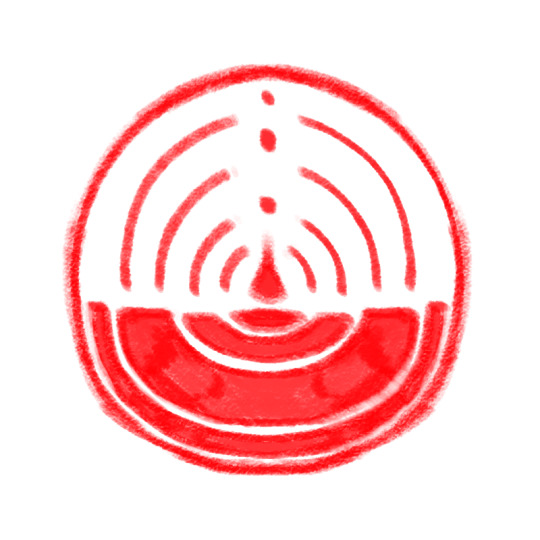
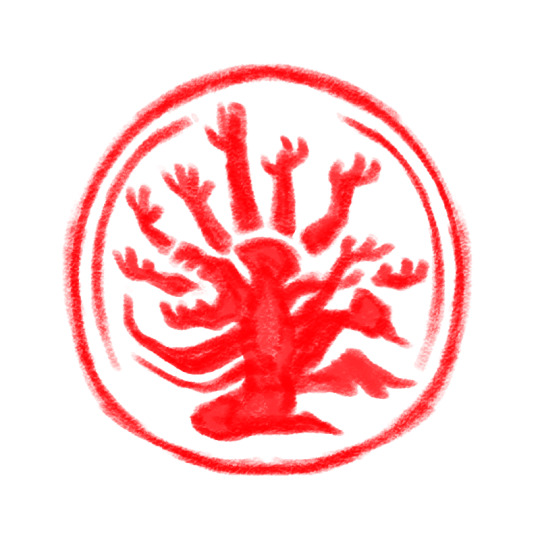
The second most common magic type with 16%, Physical Magic pertains to the ability to create shields and barriers, temporarily disguises, permanent changes of the flesh and heightening senses and attributes.
#digital art#my art#art#seasonal decay#fantasy world#fantasy#fantasy world idea#world building#magic system#original content#original art#concept
122 notes
·
View notes
Text
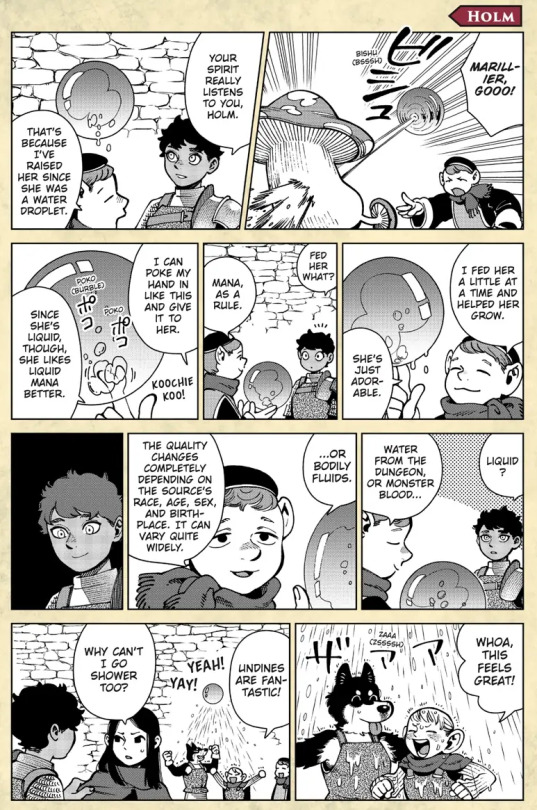
Dungeon Meshi - Holm's undine, Marillier
#Dungeon Meshi#Undine#Magic System#Dunmeshi extra#Adventurers Bible#Holm Kranom#Holm#Holm dungeon meshi#Kabrus party#Kabru#Familiar#Marillier
5K notes
·
View notes